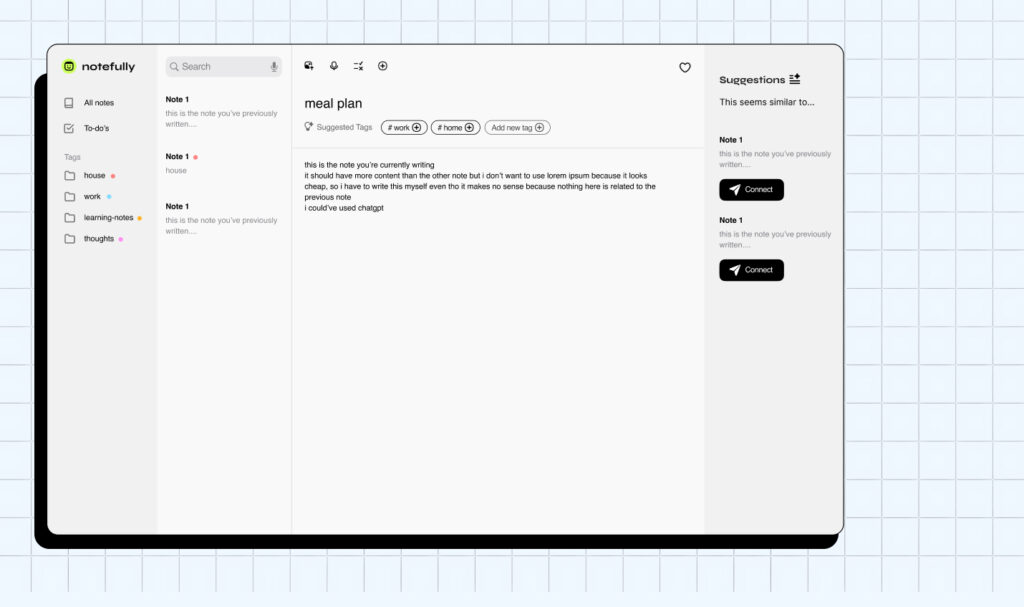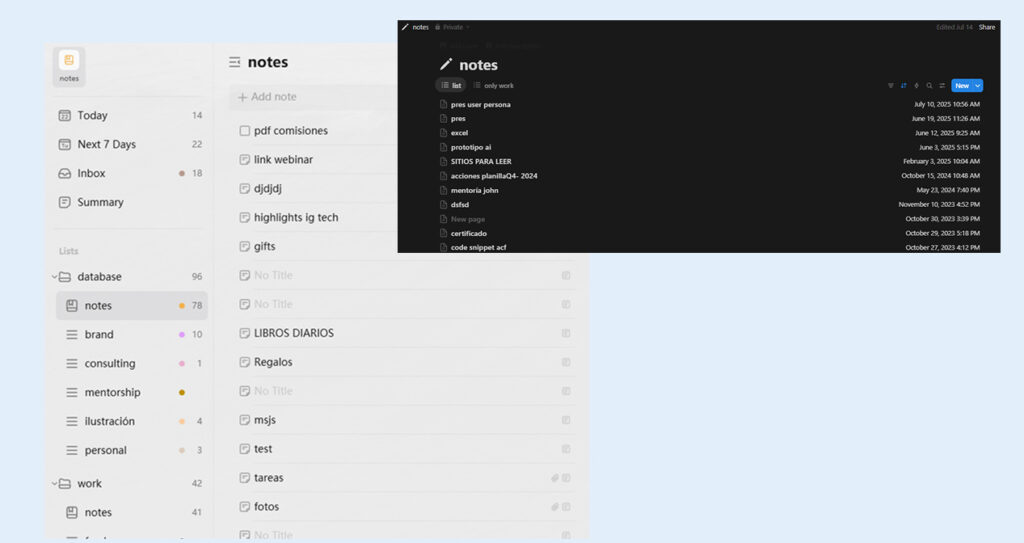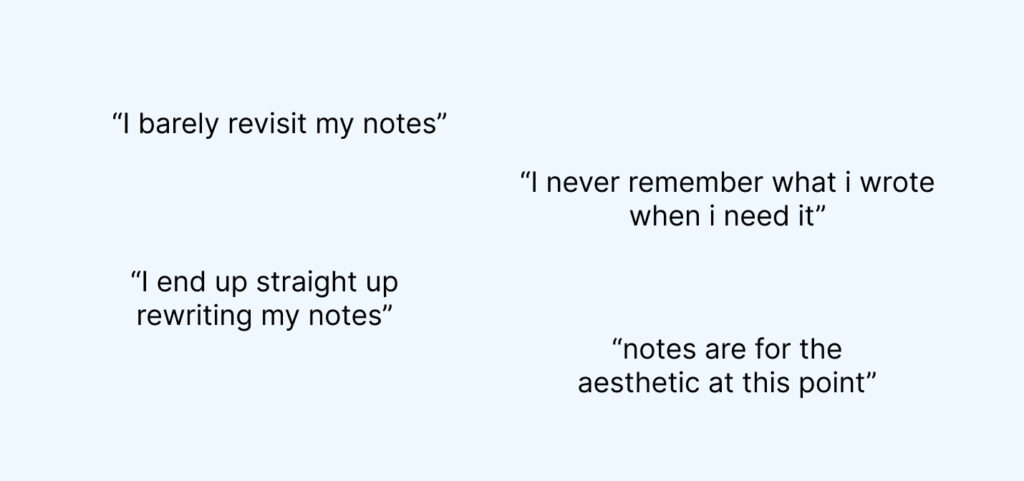
notefully: bringing chaos to clarity
Notefully is an AI-native note tool that bridges the gap between note-taking and idea-building by reducing friction and bringing context automatically.
It all started with a simple problem
When I opened my notes app, I found total chaos: 30+ notes with the same name and likely the same content.
It wasn’t only me. After talking with people across different fields, I discovered that most treated their notes app like a notebook they never revisited. This insight led me to dig deeper.

Opportunity Framing
To dig deeper into the opportunity, I talked with 5 friends (mainly students) about their problems with note taking, and sent a quick survey to 10 people, a few things I noted repeatedly:

To dig deeper into the opportunity, I talked with 5 friends (mainly students) about their problems with note taking, and sent a quick survey to 10 people, a few things I noted repeatedly:
Most note apps focus on creation and formatting, but they fall short when it comes to recall, connection, and reuse. Even the better ones (like Notion or Obsidian) assume you’ll maintain an organizational system (tags, folders, backlinks) and most people just don’t.
💡 The problem wasn’t about writing, it was about remembering.
Competitive Landscape
I benchmarked popular apps used by this group: Apple Notes, Notion, Obsidian, Google Keep. All of them rely heavily on:
- Manual tagging
- Folder structures
- Search by title or keywords
Useful, but only if the user is organized to begin with.
But learning isn’t linear, it’s pretty chaotic.
And when your system doesn’t surface connections, you forget what you’ve written, even if it’s still there.

Who has the problem?
The users struggling the most were students, researchers, and creatives who:
- Write a lot, but rarely review
- Have multiple projects going on
- Don’t have time to organize notes on tags/folders
- Need to connect ideas, critical for learning
So I selected the segment:
“Students and early-career knowledge workers who are overwhelmed with unorganized notes and lack tools to synthesize and connect what they’ve already written.”
Product Vision
What if the notes app acted like a second brain rather than a notebook?
The target audience didn’t need to spend their time organizing, but thinking and making connections between notes. So the app should:
- Understand what you write
- Organize it for you
- Connect it with past ideas, even if you forget they existed
The hypothesis was:
“If we use AI to reduce organizational friction and surface contextual links, users will be more likely to reuse and build on their notes, not just write and forget them.”
So the core of Notefully became:
A note-taking tool that doesn’t focus on just saving your notes, but helping you remember and connect ideas.
Building the MVP
The product MVP had three main flows:
- Write a note
- AI summarizes it & tags it automatically
- When writing a new note, the app shows related past notes based on content, not just keywords
Things that were excluded: AI refiner for text, collaboration, voice notes. They were all nice-to-have but way more complex to build.
This would keep my focus on the JTBD:
“When I write something new, help me remember something old that’s actually relevant.”
I used three main tools for building the MVP quickly, without code:
- Lovable.dev for scaffolding the full-stack web app
- Supabase for authentication and data storage
- OpenAI for summarization, tagging, and vector embeddings (to find similar notes)
The result was: no manual tagging, no forgetting, no complications.
Testing!
I tested the product with the same 5 users (mostly students). I wanted to solve three questions:
- Does this solution work for you?
- What do you need for this app to do to replace you main notes app?
- Would you pay for this? (to check wtp and true desirability)
Conclusions and learnings
- A good app needs to solve one problem, and to do it well, really well for someone to use your solution. The notes app market is…saturated, to say the least. So intention to switch and even pay for the platform (even a small fee!) was a nice indicator.
- Sometimes less is more, sometimes more’s more. For this case, I launched the app without text formatting, to check the core concept. Some students requested it, and some didn’t even notice there wasn’t any text formatting.
- Testing early is a MUST, and with these tools is easier than ever. Notefully is my first experiment with these tools and it certainly won’t be the last one.